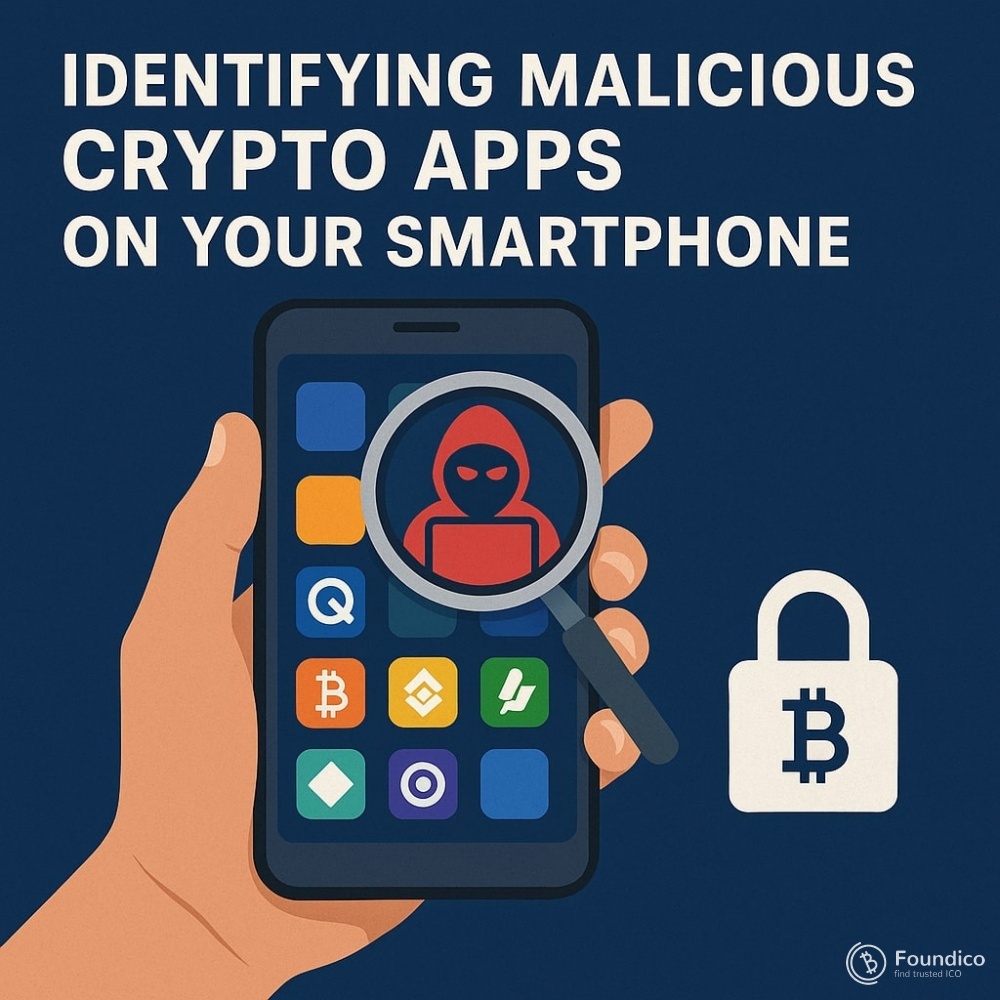Identifying Malicious Crypto Apps on Your Smartphone

By Dr. Pooyan Ghamari, Swiss Economist and Visionary
In today’s fast-growing digital economy, cryptocurrencies have become a popular asset class, and smartphones serve as a primary gateway for users to manage their crypto holdings. However, the convenience of mobile crypto apps comes with inherent risks—cybercriminals exploit this trend by creating malicious apps designed to steal funds, personal information, or compromise device security.
For both novice and experienced users, the ability to identify malicious crypto apps on your smartphone is essential to protect your digital assets and privacy. In this article, I will explore the characteristics of fraudulent crypto apps, common tactics used by attackers, and practical steps you can take to safeguard your smartphone environment.
The Rise of Malicious Crypto Apps
As the cryptocurrency market expands, so does the cybercrime ecosystem targeting it. Fraudulent apps may masquerade as legitimate wallets, trading platforms, portfolio trackers, or even news apps. They often leverage social engineering, fake reviews, or aggressive advertising to lure victims.
Malicious apps may:
-
Harvest private keys or seed phrases
-
Install spyware to monitor activities
-
Steal login credentials for exchange accounts
-
Execute unauthorized transactions
-
Exploit device vulnerabilities to spread malware
The consequences of falling victim can be devastating, including permanent loss of cryptocurrency, identity theft, and further exposure to cyberattacks.
How to Identify Malicious Crypto Apps
1. Source and Developer Verification
Always download apps from official app stores—Google Play Store or Apple App Store. Check the developer’s name, website, and reputation. Legitimate crypto apps usually have a verifiable online presence and active support channels. Be wary of apps from unknown or suspicious developers.
2. Review User Ratings and Feedback
While fake reviews are common, genuine user feedback can highlight red flags such as unexplained crashes, suspicious permissions, or unauthorized transactions. Look for consistent complaints or warnings from users.
3. Analyze App Permissions
Pay close attention to the permissions the app requests. Legitimate crypto wallets require access to the internet and storage, but requests for access to contacts, SMS, microphone, or camera without a clear reason should raise alarms. Excessive permissions are often a sign of malicious intent.
4. Check for Website and App Name Consistency
Phishing apps often mimic well-known brands but use slightly altered names or URLs. Verify app names and cross-check the developer’s official website to ensure authenticity.
5. Beware of Too-Good-To-Be-True Offers
Apps promising guaranteed returns, easy mining, or free tokens are often scams designed to lure users into installing malware or revealing private keys. Always approach such offers with extreme caution.
6. Use Security Tools and Antivirus Apps
Mobile security solutions can scan for known malware signatures and suspicious app behavior. Regularly update your smartphone’s OS and security apps to benefit from the latest protections.
Best Practices to Protect Yourself
-
Never share your private keys or seed phrases with any app or person. Legitimate wallets never ask for these details in insecure ways.
-
Enable two-factor authentication (2FA) on crypto exchange accounts and apps where possible.
-
Keep your smartphone’s operating system and apps updated to patch security vulnerabilities.
-
Avoid using public Wi-Fi networks for crypto transactions; use secure and private connections instead.
-
Regularly audit your installed apps and remove any that you no longer use or that seem suspicious.
What to Do If You Suspect a Malicious Crypto App
-
Immediately remove the app from your device.
-
Change passwords and revoke API keys or tokens connected to your accounts.
-
Transfer your cryptocurrency to a secure wallet if you suspect your wallet was compromised.
-
Report the app to the app store and relevant authorities to prevent harm to others.
-
Consult cybersecurity professionals if necessary.
While smartphones provide unparalleled convenience for managing cryptocurrency, they also expose users to unique risks from malicious crypto apps. Vigilance, careful app selection, and adherence to security best practices are critical to protecting your digital assets in this rapidly evolving landscape.
By understanding how to identify and avoid malicious crypto apps, you empower yourself to navigate the digital economy with confidence and security.
About the Author:
Dr. Pooyan Ghamari is a Swiss economist and visionary, specializing in financial innovation, blockchain technology, and digital security. His work focuses on bridging economic insight with emerging technologies to promote safe and sustainable digital finance.
